If you know about Italy’s past, then you know the country was once a collection of independent states with their own politics and languages. Though the states were unified in 1860 to create the modern Italian state, these regional differences are still apparent in Italian food.
From the hyper-local pasta dishes and meat-filled plates of the north to the fresh seafood classics, wood-fired pizzas, and sweet treats of the south, the Italian culinary landscape is vast and vibrant.
While settling into your new home, perhaps learning the language, and exploring its many places to visit, why not delve into Italian culture by eating your way through the different regions?
HelloFresh
Want to create some classic Italian dishes in your own kitchen? HelloFresh is a leading meal-kit provider that delivers innovative recipes from Italy and around the world straight to your doorstep. Choose from a range of recipes and let HelloFresh transform mealtime for you and your family.
Cacio e Pepe
When in Rome… you might as well eat as the locals do and feast on cacio e pepe, a deceptively simple pasta dish that is a staple of Roman osterias (humble local eateries).
Originally developed in the Roman countryside, this dish became popular throughout the country because of how accessible its ingredients are. Now, it is available from the simplest osterias to the finest high-end restaurants.
To create a classic version of this Italian food, boil spaghetti in salted water until almost cooked, then toss the pasta in a pan with a dash of leftover pasta water, fresh Pecorino Romano cheese, and toasted black pepper. It may seem easy, but cacio e pepe can be tricky to master. Practicing until you get it right, though, will go a long way with your cultural immersion in Italy.

Make your own
- Keep this simple recipe in your kitchen
- Hone your skills with this easy-to-follow tutorial
Amatriciana
Created in Amatrice, a rural town in Rome’s Sabine hills, Amatriciana is a delightful dish with a long history. Legend says that it was first created in the 17th century, but it wasn’t until 1790 that chef Francesco Leonardi first put the recipe in his L’Apicio Moderno cookbook. Since then, though, the dish has become so synonymous with Italian food that it has made appearances in films like An American in Rome and Eat, Pray, Love.
The traditional recipe calls for frying juicy guanciale (cured pork jowl), which adds a salty depth to the dish. The fat from the meat is then used to sautée freshly diced tomatoes, after which a dash of black pepper and chili is added for a touch of spiciness. Toss the quick-cooking sauce liberally with grated Pecorino cheese and fresh pasta – usually bucatini or spaghetti – and enjoy with gusto.

Make your own
- Try this authentic recipe (in Italian), which is officially approved by the town of Amatrice
- Whip up this classic recipe
- Learn to prepare this dish with this fun video
Pizza Napoletana
A symbol of Italian food, and Naples, the pizza Napoletana – better known as a Margherita – is a simple yet elegant classic.
The pizza as we know it was born in 1889, when, according to local (disputed) legend, pizzaiolo Raffaele Esposito created the dish in honor of Queen Margherita of Savoy’s visit to Naples. His preparation is still the gold standard today – so much so, in fact, that it has UNESCO cultural heritage status.
To be an authentic Napoletana, a pizza must meet three specifications. It must use Type 0 or 00 wheat flour for the dough, the tomatoes must be San Marzano, and the mozzarella cheese should be fior di latte or mozzarella di bufala. After adding the appropriate ingredients, you must bake the pizza in a wood-fired oven.
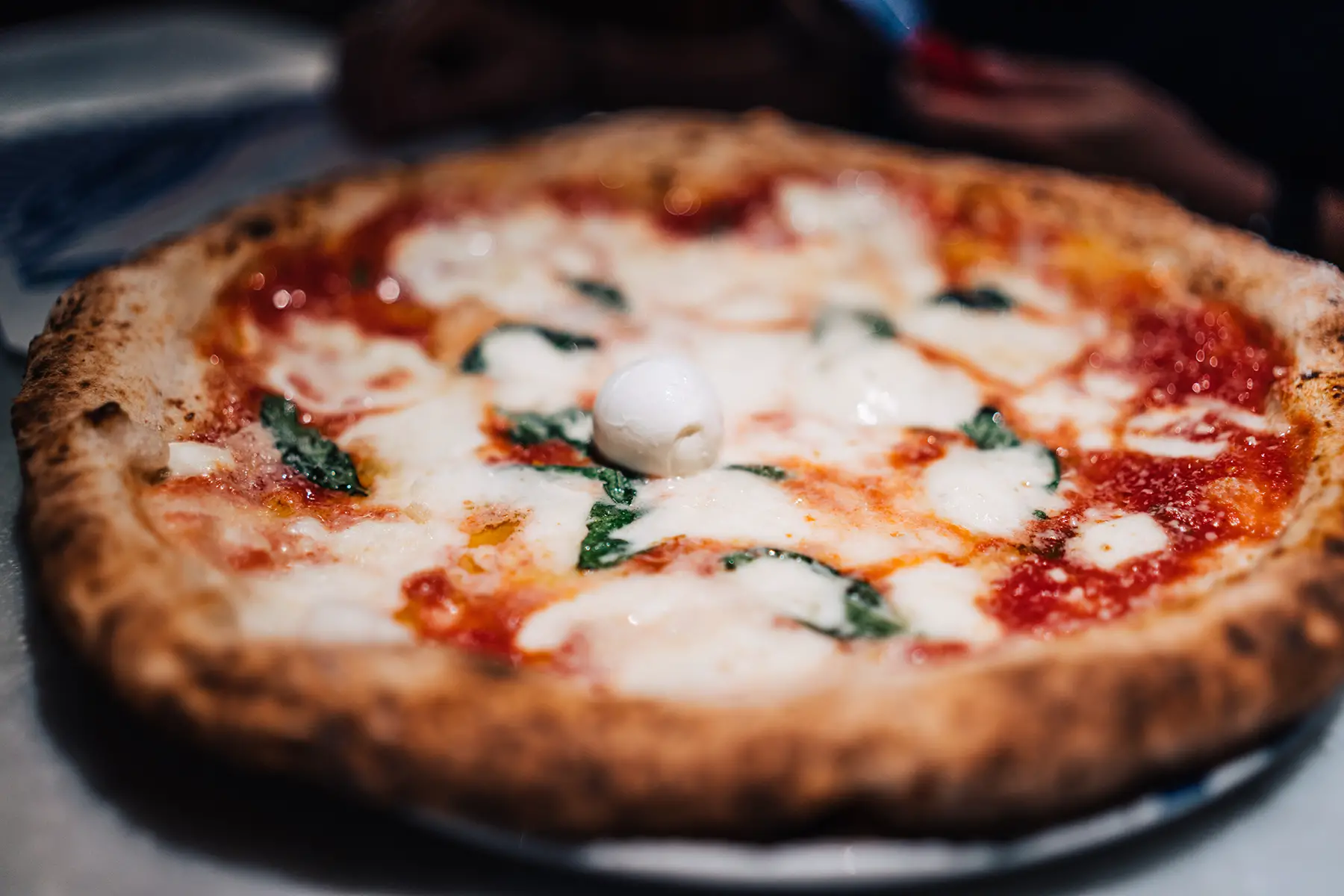
Make your own
- Create the perfect pizza with this detailed recipe and video
- Try this authentic pizza recipe
Pansotti
Native to the Liguria region of Northwest Italy, pansotti is a type of stuffed pasta, similar to tortellini or ravioli. The word derives from the Genovese pansa, which – appropriately – means potbelly.
Traditionally, locals fill the large triangular pasta with preboggion, a mix of 14 wild herbs taken from the Ligurian countryside, including radicchio, wild Swiss chard, dandelion, poppy, and wild fennel. After making the pasta and cooking it perfectly al dente, drizzle it with walnut sauce, another Genovese specialty. You can also sometimes find it with a tomato and mushroom sauce.
No matter its preparation, pansotti is always vegetarian and is therefore particularly popular during Lent and other religious holidays.
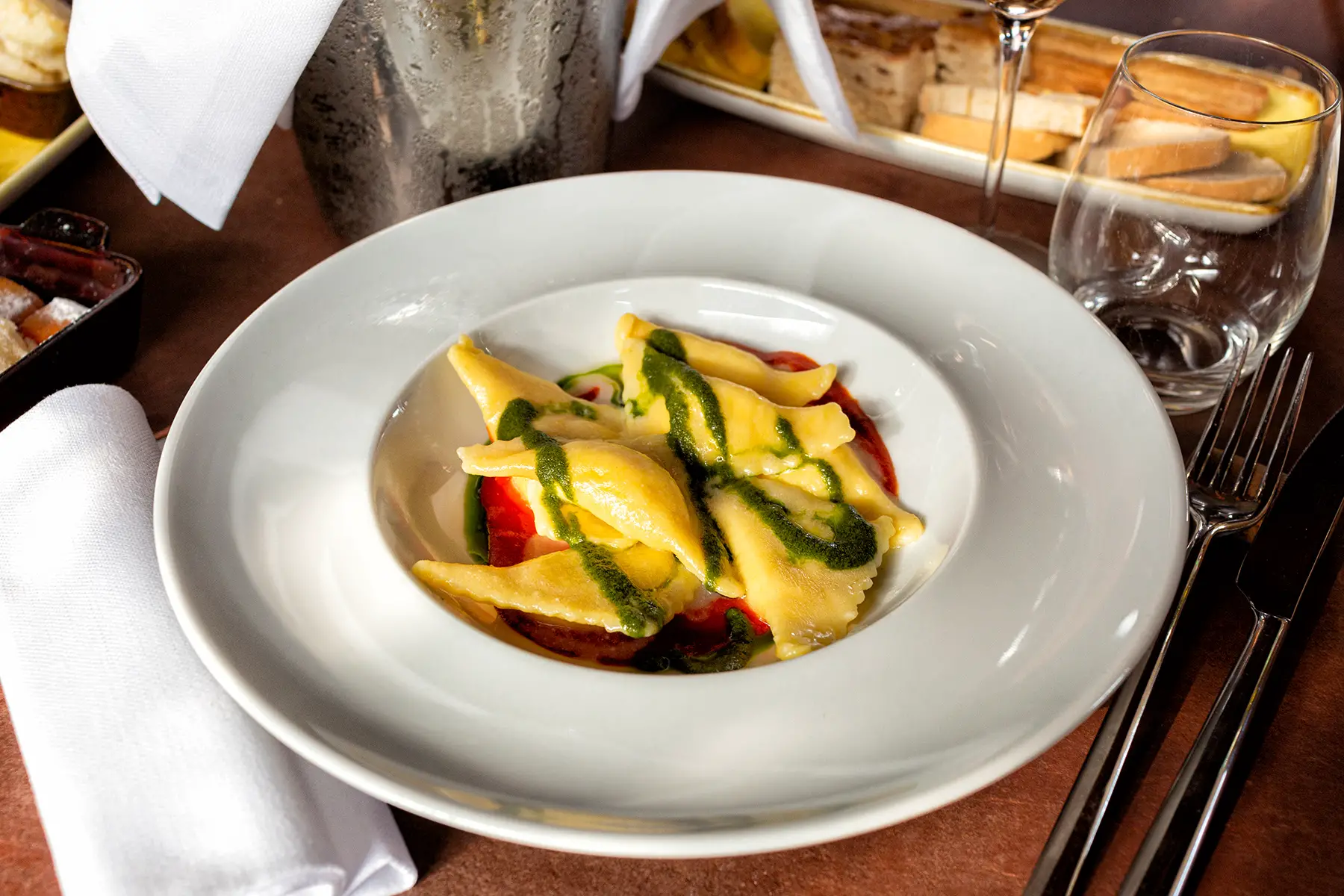
Make your own
- Delight diners with this authentic, nonna-approved recipe
- Practice makes perfect with this easy-to-follow chef’s recipe
Ossobucco
Milan might be Italy’s fashion capital, but it is unquestionably a center for Italian food, too. The city is responsible for creating ossobucco, a warming winter stew with roots in the 19th century. Traditionally, the dish is made with cross-cut veal shanks, vegetables, white wine, and broth, then finished with a garnishing of gremolata.
Although the stew is hearty and delicious enough to be a meal in itself, locals will often eat it with some type of starch. Usually, this would be a risotto Milanese or polenta. Ossobucco, which literally means bone with a hole, is rather simple to make but requires time and patience. You will usually need to let the meat marinate overnight.
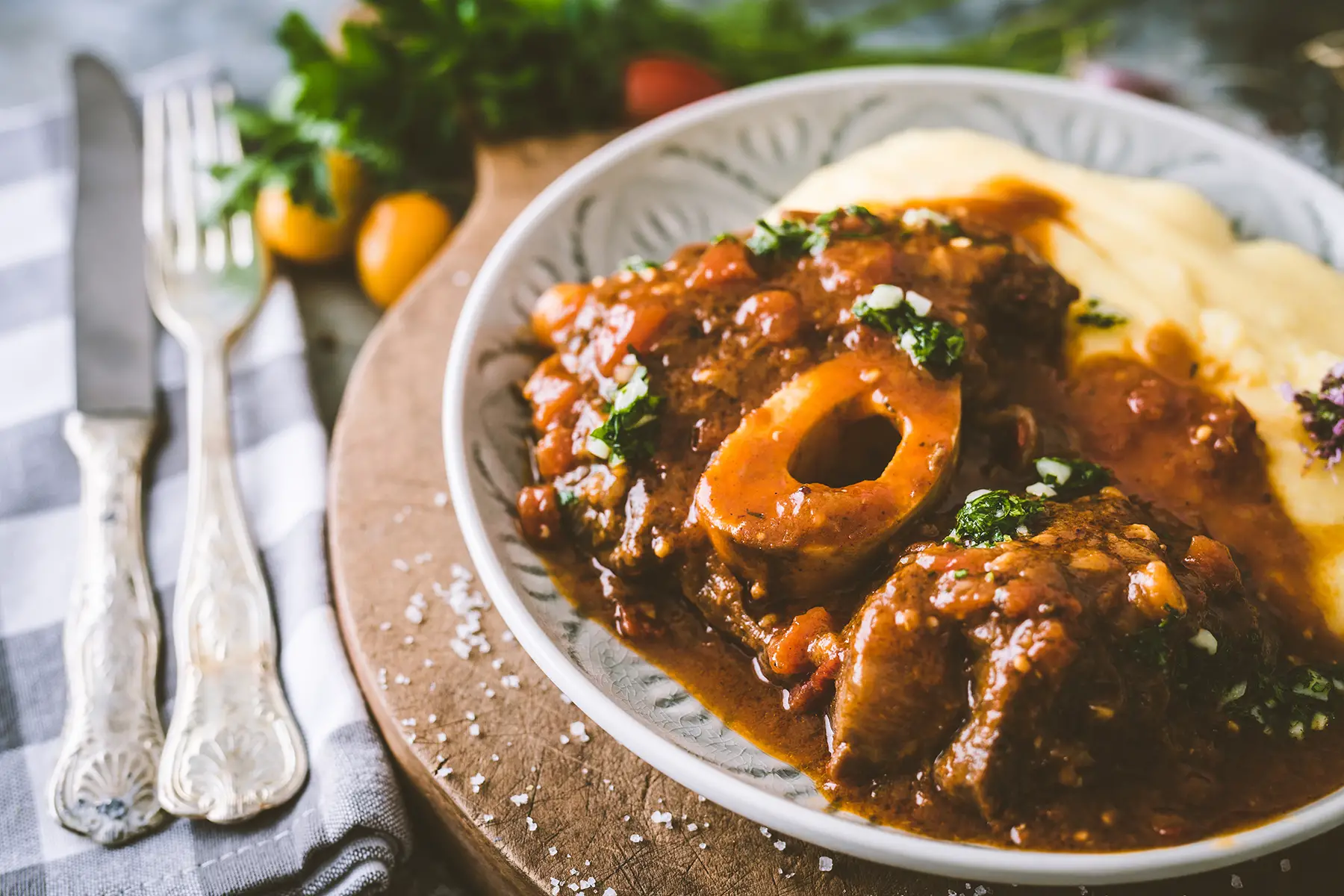
Make your own
- Feast on this restaurant-quality recipe
- Follow this video for a Michelin-starred recipe
- Perfect your ossobucco with this detailed recipe
Pastissada de Caval
According to legend, pastissada de caval was the invention of Theodoric, the famous Ostrogoth king. After his victory over Odoacer, Theodoric is said to have let people use the flesh of dead horses from the battlefield as meat. But because the carcasses had been left for a few days, the meat needed to be generously flavored to be edible. Now, the rich stew is a classic in the city of Verona. Though, the use of horsemeat makes it a divisive dish.
Many restaurants will now make it more palatable with more innocuous ingredients, such as chicken or beef. In the classic recipe, horse meat is cooked with onions, carrots, cloves, and red wine – usually a local Valpolicella – then flavored with spices like cinnamon and nutmeg. The stew is often served with polenta to complement its richness.
Make your own
- Level up with this simple recipe in Italian
- Print out this step-by-step guide to keep on hand
- Whip up this easy recipe
Risi e bisi
Traditional Venetian cuisine is simple, hearty fare made from readily available ingredients. Because of this, it is often referred to as cucina povera (peasant cooking). No dish captures this more than risi e bisi – rice and peas, in the local Venetian dialect – a soupy rice dish that has become a staple of the city’s many homes and eateries.
To make this dish, cooked rice and peas are added to a simple, flavorsome broth made using onion and fatty pancetta. The meal might seem humble, but it is certainly fit for the highest echelons of Venetian society. In fact, risi e bisi was often served at the Doge’s banquet that was held on April 25 each year to celebrate the city’s patron saint, St Mark.

Make your own
- Take it easy with this simple recipe
- Try this variation for a surprisingly flavorful dish
Ribollita
This hearty, rustic soup comes from the verdant Tuscan countryside, where locals enjoy it through autumn and winter, after the wine harvesting season.
Originally, ribollita was eaten by Tuscan peasants who would combine leftover bread crust with reheated vegetable soup. It also pays homage to Catholic tradition, where Fridays are a day of penance, and adherents are not supposed to eat meat, dairy, or other rich products. The dish’s name means ‘reboiled,’ which refers to the focus on its preparation rather than its ingredients.
To make ribollita, there are three staple items: stale bread, cannellini beans, and kale. After this, you can add whatever else you might have on hand. Because it is often made with leftovers, this soup might be considered one of the most sustainable Italian foods. It also boasts rich flavors because it is usually reheated several times.
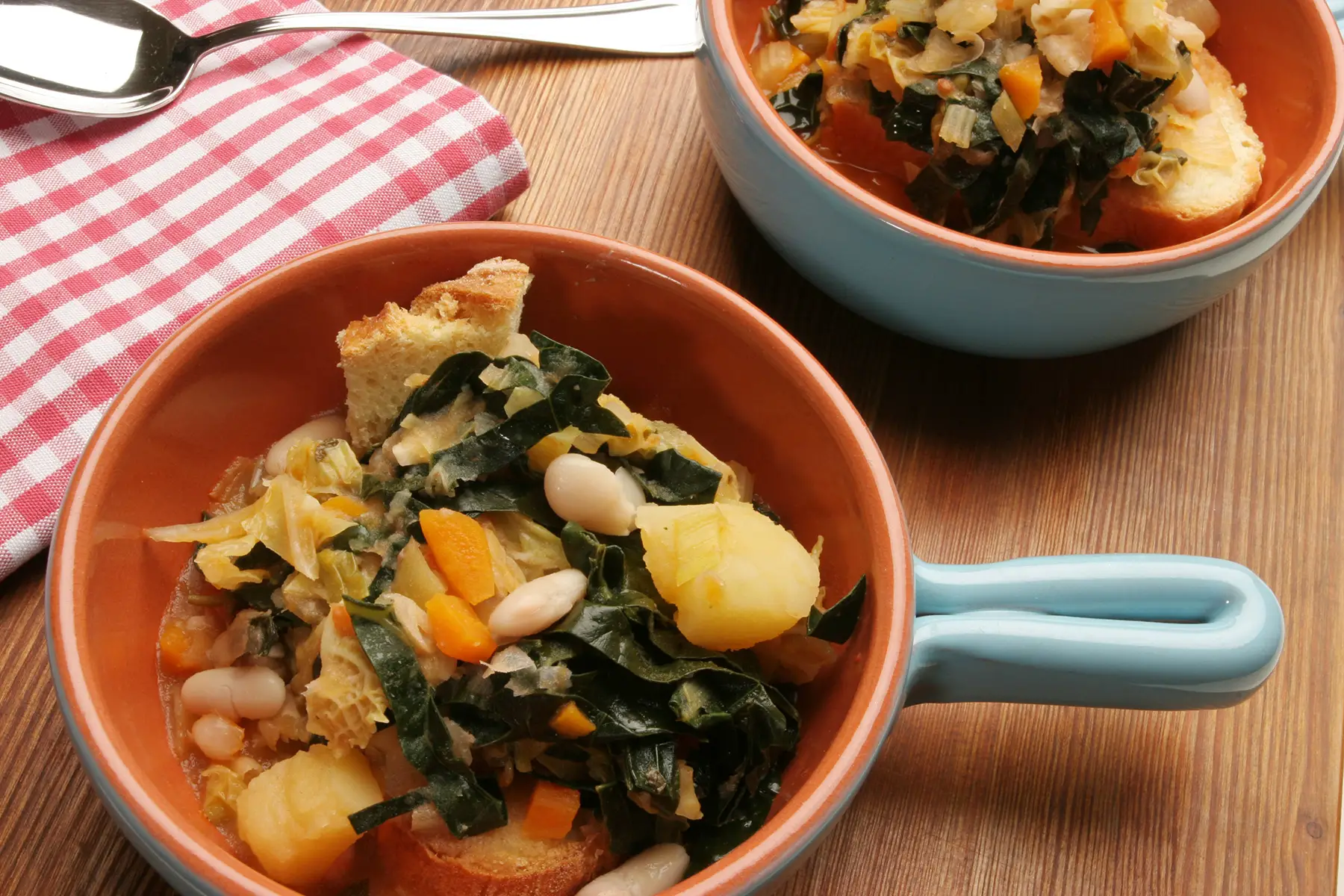
Make your own
- Find inspiration with this easy video recipe
- Master the basics with this easy-to-follow recipe
Acqua pazza
Literally, acqua pazza means ‘crazy water’, which refers to the unique preparation of this Neapolitan seafood dish. The origins of this Italian food go back to the Middle Ages and the conditions of the time. Because salt was subject to a heavy tax, local fishermen would poach their daily catch in seawater.
Generally, the centerpiece of the dish is a white fish, such as sea bass, cod, or halibut. The fishermen would then add olive oil and tomatoes to the marinated fish as a simple but satisfying seasoning.
Over time, the recipe evolved and peaked in popularity in Capri in the 1960s. Now, there are many variations of the dish, and you might find acqua pazza made with red snapper or Maine lobster, enlivened with vegetables and spices, and even served with bread for dipping.

Make your own
- Whip up Jamie Oliver’s foolproof recipe
- Go simple yet elegant with this easy recipe
- Watch this fun instructional video, then print the recipe to keep
Cacciucco
A Tuscan fish stew that packs a flavorful punch, cacciucco is believed to have been created in Livorno more than 500 years ago. As the story goes, the city’s frugal fishermen would sell their day’s catch at the market, then use whatever scraps were left in their boats to create this delicious dish.
The great Italian chef, Pellegrino Artusi, originally called for sole, red mullet, gurnard, dogfish, and mantis shrimp in his 1891 cookbook recipe, though he advises the chef to use “whatever fish you may have on hand.” These days, though, you are more likely to find octopus, squid, cuttlefish, and prawns. Because of this, cacciucco is another great Italian food for experimenting in the kitchen.
Do as the locals do and serve the stew with toasted garlic bread.
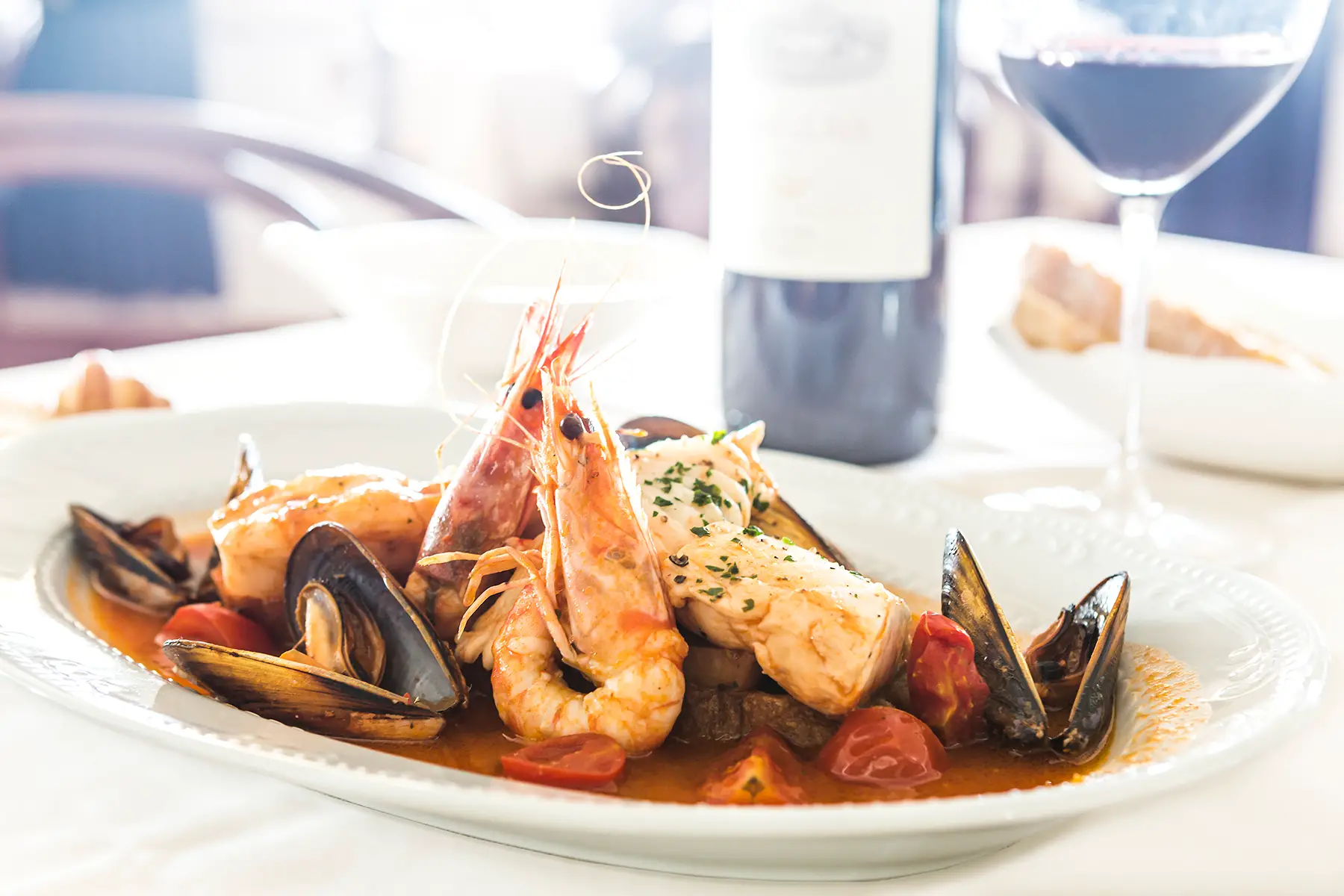
Make your own
- Start experimenting with this simple recipe
- Be inspired by this visual recipe
- Shake things up with this surprising recipe


